Dragon Ball FighterZ (Nintendo Switch) Review
By Rudy Lavaux  04.10.2018
04.10.2018
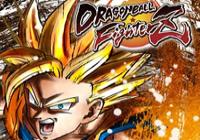
Son Goku and friends are back on Nintendo Switch! Dragon Ball Xenoverse 2 was announced before Switch launched but ultimately saw release long after it did on other platforms. When Dragon Ball FighterZ, a modern 2D fighter by the kings of the genre, Arc System Works, released on every platform but Switch, owners of the latter felt more than a bit outraged that it wasn't coming to their console of choice. Bandai Namco then assured them they would look into bringing it over should Xenoverse 2 sell well… and sell well the latter did, although its sales performance probably had little influence in the matter since the team later confessed that development on the Switch version of FighterZ started as soon as development kits arrived, but was halted to finish other versions first. Nevertheless, the long awaited release of Dragon Ball FighterZ on Nintendo's hot console of the moment is now here, so it is time to finally check it out.
No matter what platform it is played on, Dragon Ball FighterZ is a snappy, fast-paced fighting game running in full 3D, both on the characters themselves and on the backgrounds, but with the gameplay locked on a 2D playfield like the fighting games of old. This is similar to the Super Butouden series and Hyper Dimension on Super Famicom but also to Dragon Ball Kai: Ultimate Butouden by Game Republic for Nintendo DS and Dragon Ball Z: Extreme Butouden for Nintendo 3DS, also developed by Arc System Works and to which FighterZ resembles the most in terms of gameplay. This one, however, has a high emphasis on replicating as closely as possible the look and feel of the animated series in the presentation department, something at which it succeeds brilliantly. The presentation is the culmination of work made by Arc System Works on a previously released title, Guilty Gear Xrd, for HD consoles of the current generation, which used the same engine, and it works brilliantly at bringing to life what is arguably the most gorgeous Dragon Ball title ever released.
On start-up, Dragon Ball FighterZ offers the choice of two modes of play, online and offline. It is indeed a game that wants to be online at all times by default and expects players to pick online most of the time so as to be able to quickly jump into online modes and so on from the main lobby. It acts as a 3D selection menu of sorts where a player avatar can roam the plaza and pick whatever they want to do by walking up to the desired stall. Therefore, if the online mode is selected on start-up, all online functionalities suddenly become available, while in the offline mode, the same lobby will be there, although devoid of other players, but online functionalities like online play or replay uploads and downloads will be greyed out. There is a catch for players selecting the online mode, though. If they decide to put the system in sleep mode, undock it and bring it somewhere else, and the Wi-Fi connection the console was tied to is lost along the way, an unpleasant surprise awaits indeed. Upon waking up the Switch console, players will find themselves unceremoniously kicked back out of whatever it is they were doing upon putting the system to sleep and sent back to the title screen without any opportunity to save progression, which is decidedly annoying. Therefore, if a player knows they are not going to be using online functionalities at all for their current session, they are better off only selecting the online option when absolutely sure they want to use it. Also, as a consequence of this "always online" nature of Dragon Ball FighterZ, the Switch version is one of these games that do not pause when the home menu is brought up which means that the game keeps running in the background no matter what. This even happens in offline mode as a matter of fact. This behaviour will likely go against what avid Switch players are typically used to, so taking up the habit of pausing the action before doing so will be essential to those.
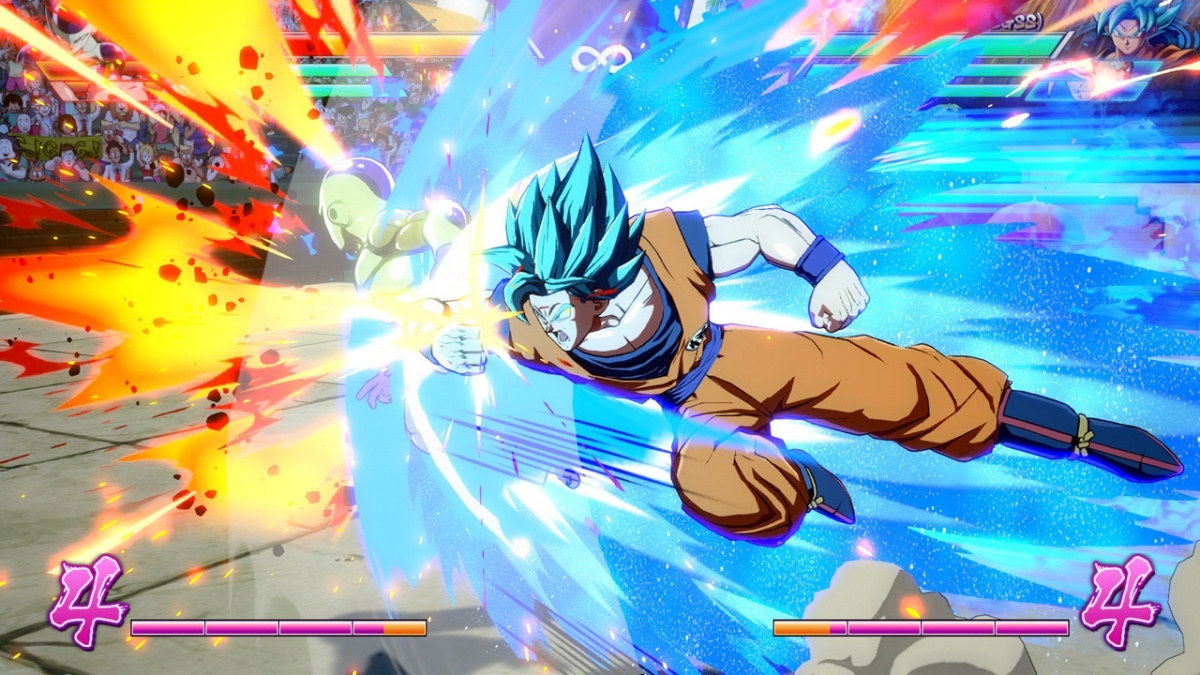
Those technical considerations aside, though, the always-online aspect of things is otherwise meant to instil a sense of community with many customisation options for the player's avatar and character profile, to present themselves to the rest of the world also playing the game. Those range from background images, changing the colour of the player's avatar, or joining "Z Unions" where each player may voice their love for their favourite Dragon Ball character, although choice is limited to those playable in Dragon Ball FighterZ. New avatar characters, colours and images can be unlocked at the shop by spending Zeni earned in-game on Hoi-Poi capsules containing the desirable prizes. Naturally, as with any type of collection, the same items tend to appear multiple times. There is, therefore, a system in place where whenever an item is obtained that the player already unlocked, it automatically gets converted into a Premium Z Coin. Spending ten of these ensures the player receives a capsule containing an object they did not already own, which makes collecting absolutely all of them a task that doesn't rely too much on luck, yet this will still be quite the daunting task. Moreover, over time, certain seasonal items become available from a special section of the shop that represent the current time of year, such as, at launch, Halloween, for example. There are, therefore, thousands of different customisation options for the player's avatar.
Dragon Ball FighterZ is not all about roaming the lobby, though. The amount of modes of play available is absolutely satisfactory indeed. The tutorial mode is very comprehensive and helps players learn every little technique possible very quickly. Jumping into the story mode, however, the player is once again presented with prompts to perform actions, just like in the tutorial, all over again. It would have been nice to be able to turn these off since they get in the way of the action being displayed, which in itself is so gorgeous to look at, even on Switch. In the later parts of the story mode, though, these tutorials do not appear anymore as the player is then expected to have finally digested it all. Story mode offers three arcs to play through where more playable characters unlock over each chapter and, as opposed to several past releases, the story depicted is completely original and not based on the existing manga/anime. A new character designed by Akira Toriyama himself specifically for this game, Android 21, gets introduced in those story segments. The latter show characters in cut-scenes that look closer to the source material than any other game before it has ever managed. This game is simply gorgeous indeed. Compared to other platforms, docked mode on the Switch appears to be running at 1080p60, with no apparent dips in frame-rate in the midst of the action as everything remains really smooth. It is important to note that characters themselves are animated at a lower frame-rate, regardless of the platform it runs on, so as to match the typical 24fps of the anime, but this is a deliberate choice in the art direction and not a technical problem with consoles or the game itself. In handheld mode, fights themselves do seem to run at a resolution slightly lower than 720p, while everything else, cut-scenes and menu segments included, seem to be at 720p. No complaints are, therefore, to be had about how good the game runs and how gorgeous it looks.
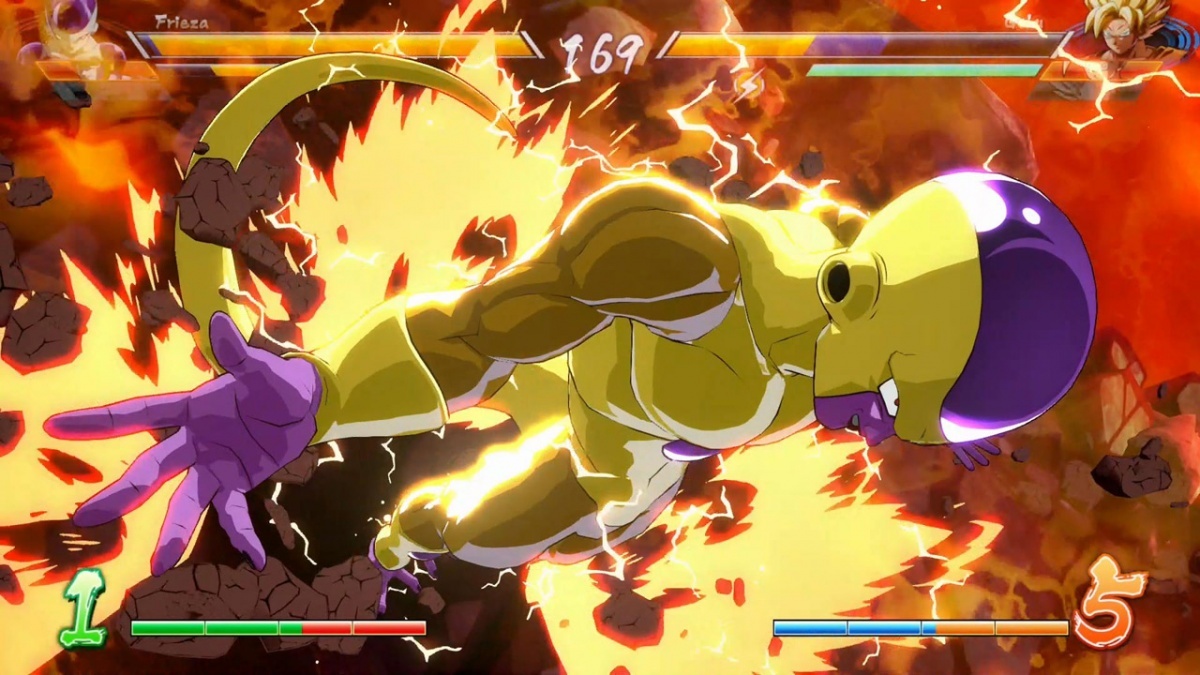
There is something to be said about content being king, though, as this could definitely have included more characters from the start on Switch to compensate for the late release on the platform. Then, lack of platform specific starting roster aside, even if that had been the case, the roster would have been quite scaled back by comparison to older home console releases. Take Dragon Ball Z: Tenkaichi Budokai 2 on the Wii, for example, which had 80+ playable characters on disc for the price of a regular release, with no DLC to be had. Here, however, players get only 24 characters in the basic game. Then there are eight other characters also released so far on other platforms as paid DLC available from day one on the Switch eShop, purchasable individually or bundled together as part of the FighterZ pass. It is worth noting that more may yet come in the future. Each additional playable character is sold an exorbitant £4/€5/$5 apiece. This is asking quite a bit more from players when compared to the amount of content that the aforementioned Wii title used as an example had to offer. Granted, some of the playable characters on offer here bring other characters as "assists" for certain techniques, such as Tien Chin Han having Chaozu's suicide blast as a special skill, but still, players used to older releases may feel that there could have been much more on offer. Speaking of additional payments, a Nintendo Switch Online subscription is required to enjoy online play and, for the record, it does support Cloud saves, which should put a few minds to rest.
Online battles come in multiple forms, from party play where a group of six players can play one character each and be divided in two teams of three, to world match where players play against one another by teams of three playable characters of their own choosing. The latter come in two flavours: ranked matches where one player battles with three characters and battle results award or take away ranking points that tally up player performances into an online ranking system... and then casual battle where player performance will not affect anything beyond the scope of this one battle. Arena Matches are a bit more special in that only player's within the same lobby may fight against one another to determine who is the best fighter in the lobby itself. It is also possible to watch other players play, which is a nice addition indeed. Online performance, compared to something like Street Fighter 30th Anniversary Collection proves to be excellent with different lobbies allowing to narrow down possible opponent's origin to a relatively close area around the player. While playing for review, however, even against people from different countries on the same continent, performance proved to be free of lag. Player experience may differ depending on the quality of their own connection or that of the opponent, of course, but the net code on Switch seems to work perfectly well at time of writing, at any rate. With the game only being released fairly recently, though, lobbies tended to be somewhat unpopulated but, then again, with the aforementioned problems that enabling online can bring up, that may well have some influence on the number of people choosing to enable it.
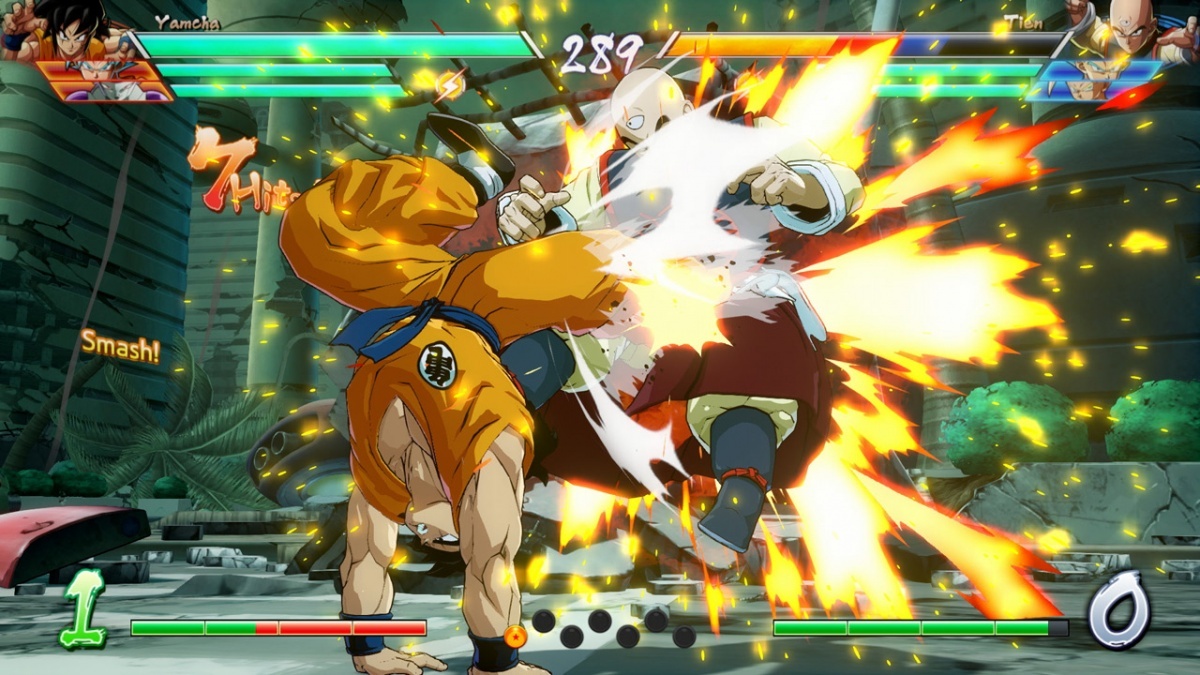
As for offline fighting modes, the traditional Arcade Mode is present where players may choose from three different "trees" of battles where winning against a team of three opponents and performance level determines what the next group of fighters will be. High performance moves the player up on rank, whereas low performance moves the layer down. It plays very much like how the player may select between an easier "left" or harder "right" route in Outrun for comparison, with multiple endings for the player to aim for and reach to have seen and done it all in the mode of play. Then, naturally, local multiplayer is available in Local Battle mode, be it on the same system or, as is traditional on Switch, over local communication with another Switch unit. A local tournament mode is also present where players can recreate their very own Tenkaichi Budokai, just like in the manga/anime. Players switch places over the course of each battle on the same Switch system and up to 16 players can enter the tournament. CPU opponents may be toggled on or off. All told, the variety of game modes is certainly very high and the game contains easily every possible imaginable desirable way to fight either the computer or other people. The Switch version is also the only one to include 2vs2 and 1vs1 character battles, removing what was on other platforms a limitation of the software by restricting battles to 3vs3 mode.
With any fighting game, there's the question of controls. There's no doubt in anyone's mind that the Pro Controller should work for the task and it does so perfectly fine. Twin Joy-Con work just as well as one could hope with the tiny joysticks proving comfortable enough to perform the relatively simple rotations required for some of the special skills on offer. The most important question pertaining to controls is likely going to relate to single Joy-Con mode, for use for example in two-player local tabletop mode. It controls surprisingly well, all things considered. Due to the lack of buttons on a single Joy-Con to map all the different actions the fighters can perform, actions normally performed with the triggers have been assigned to pressing two face buttons at the same time. Normal controls using more traditional controllers already require doing so to charge up Ki or to teleport behind the opponent, so it doesn't feel too strange to do more combinations with a single Joy-Con and, due to buttons being so close to one another on there, it isn't uncomfortable to pull off, either. It wouldn't be recommended to use a single Joy-Con to play single-player or online, of course, but for tabletop play on the go with another player, with both players using the same type of controller, it shouldn't feel too unfair for either player save perhaps for whoever uses the Joy-Con-R, which due to the placement of the joystick on it, may feel slightly less comfortable to use depending on the user's hand size.
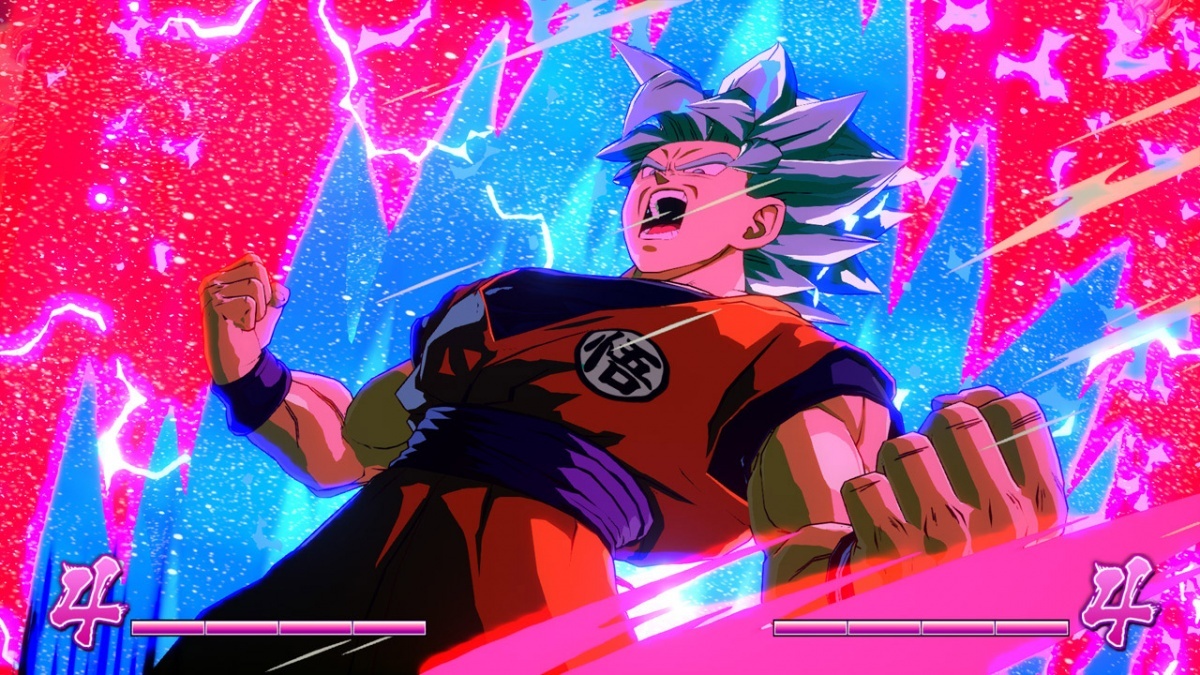
Cubed3 Rating
Exceptional - Gold Award

Dragon Ball FighterZ is a marvellous work of love from the developer to bring to life in the HD world a massively fun game to play for fans and non-fans of the franchise alike. The fact that it ties in with a resurgence in popularity of the franchise after Dragon Ball Super aired around the globe shows it is probably no coincidence but it's no mere cash-in, either, but one of the best fighting games to be played on the Nintendo Switch so far and arguably the one that plays online the best to date. It is a complete success on a pure technical level in terms of performance on the hybrid console but the user experience could have been slightly better thought out when it comes to the implementation of the always-online functionality. Finally, the lack of more fighters to choose from, with much of the roster relegated to being paid DLC, will leave people with an impression that the publisher felt a bit too greedy.

![]() 9/10
9/10
![]() 0
(0 Votes)
0
(0 Votes)
 Out now
Out now  Out now
Out now  Out now
Out now  Out now
Out now Comments
Comments are currently disabled

 Sign In
Sign In Game Details
Game Details Subscribe to this topic
Subscribe to this topic Features
Features





 Top
Top

